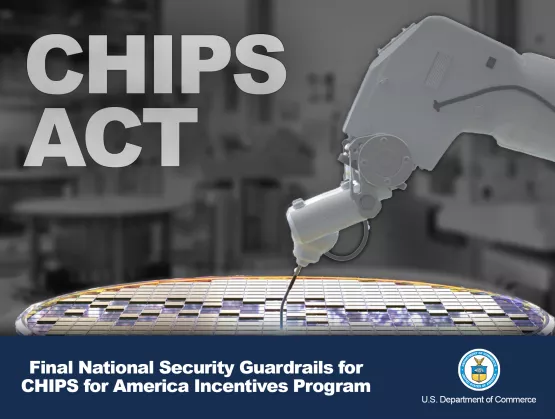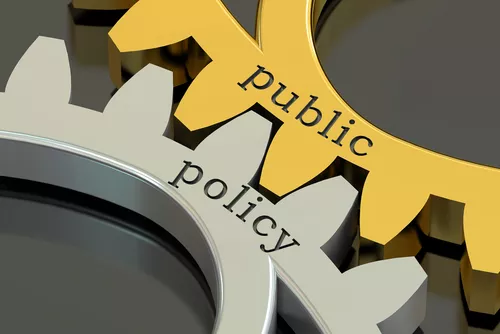
On September 22, the U.S. Department of Commerce issued the final rule on its implementation of the national security guardrails outlined in the text of the CHIPS and Science Act. As SEMI noted in a previous blog, these guardrails are intended to harmonize with existing export control policies, prevent CHIPS funding from benefiting foreign entities of concern, and establish agreements with funded companies limiting their expansion into countries of concern. The release of this rule follows the Commerce Department’s issuance of a proposed rule in March 2023 to which SEMI responded with comments.
The final rule provides additional detail on the implementation of these guardrails by defining terms used in the legislation, clarifying the prohibition on significant transactions that could benefit entities and countries of concern, and describing process for notifying the Secretary of Commerce (the Secretary) about any planned significant transactions.
Definitions – Subpart A of the rule defines specific terms found in the Expansion Clawback section of the CHIPS and Science Act, which prohibits recipients of CHIPS funding, or their affiliates, from engaging in significant transactions that enable the material expansion of semiconductor manufacturing capacity in a foreign country of concern. The final rule significantly modifies a number of definitions outlined in the proposed rule, including existing facility, legacy semiconductor, semiconductor manufacturing, and technology licensing. It also adds definitions for members of the affiliated group and research and development, while removing proposed definitions for affiliate, applicable term, funding recipient, and significant transaction.
 General – Subpart B of the final rule outlines specific provisions that will be used in any award agreement, essentially restating the language of the Expansion and Technology Clawback sections of the CHIPS and Science Act. This section modifies certain provisions of the proposed rule, including the application of the prohibition on certain joint research or technology licensing only to covered entities. In addition, the section does not apply to activities that were ongoing prior to the Secretary raising national security concerns. The final rules also add a new provision empowering the Secretary to impose conditions on covered entities designed to mitigate against the circumvention of the Technology Clawback.
General – Subpart B of the final rule outlines specific provisions that will be used in any award agreement, essentially restating the language of the Expansion and Technology Clawback sections of the CHIPS and Science Act. This section modifies certain provisions of the proposed rule, including the application of the prohibition on certain joint research or technology licensing only to covered entities. In addition, the section does not apply to activities that were ongoing prior to the Secretary raising national security concerns. The final rules also add a new provision empowering the Secretary to impose conditions on covered entities designed to mitigate against the circumvention of the Technology Clawback.
Finally, Subpart B clarifies that the retention of records requirement applies to records on significant transactions relating to material expansion of “semiconductor manufacturing capacity in a foreign country of concern, as well any records that relate to a transaction that is being reviewed by the Secretary that are maintained by the covered entity, a member of the affiliated group of the covered entity or by a related entity.”
Notification and Review – Subpart C details the procedure for notifying the Secretary regarding a significant transaction and the process by which the Secretary reviews such transactions (or any other actions) to determine whether they violated the prohibitions outlined in statute. The final rule clarifies that the notification period aligns with the Expansion Clawback, and makes significant changes to the process, standards, and timing for initiation of review, procedures for review, and “the Secretary’s review of possible violations of the prohibitions on certain joint research or technology licensing.” The updated section also authorizes the Secretary to waive the recovery of funds in circumstances where the covered entity has established and abided by an appropriate mitigation agreement.
Other Provisions – Lastly, Subpart D directs the Secretary to assess which technologies should be covered by the definition of legacy semiconductor. This assessment must be conducted biannually starting on August 9, 2024 for the eight-year period after which the last award is made under the CHIPS Incentive Program. The final rule adds a severability clause.
SEMI Global Advocacy
If you have any questions about the final rule, please contact Ben Kallen in SEMI Global Advocacy at bkallen@semi.org.
Discover how SEMI Global Advocacy & Public Policy supports the microelectronics industry across trade, taxes, talent, and R&D.
John Cooney is Vice President of Global Advocacy and Public Policy at SEMI.